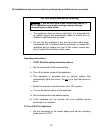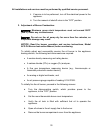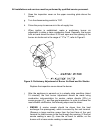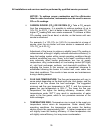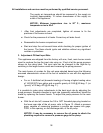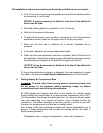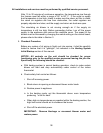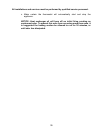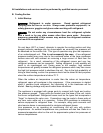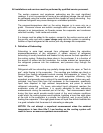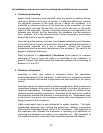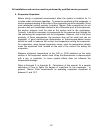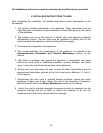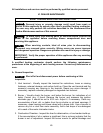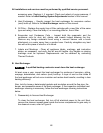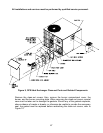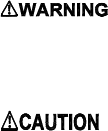
All installations and services must be performed by qualified service personnel.
B. Cooling Section
1. Initial Startup:
: Refrigerant is under pressure. Guard against refrigerant
spraying into the face or on skin. Always wear protective equipment, i.e.
safety glasses or goggles and gloves when working with refrigerant.
: Do not under any circumstances heat the refrigerant cylinder
with a torch or by any other means other than warm water. Excessive
pressures generated in this manner may weaken the refrigerant container
and result in an explosion!
On cool days (65°F or lower), attempts to operate the cooling section and take
gauged pressure readings may be unsuccessful as unusually low pressure will
be observed on the suction line. This type of operation may give the impression
of an undercharged unit. This is not necessarily the case. A low refrigerant
pressure reading may occur due to the combined action of the large condenser
surface area and cold ambient air removing a large amount of heat from the
refrigerant. As a result, subcooling of the refrigerant occurs and very low
refrigerant pressures can be measured. Adding refrigerant in cold weather will
result in an overcharged unit. During warm or hot weather, high ambient
temperatures will greatly increase the refrigerant pressure which may then cause
the high limit pressure switch to shutdown the unit. Due to the high probability of
taking a false reading, suction line pressure should not be taken for test purposes
when the outdoor temperature is below 70° F.
When the outdoor air temperature is cooler than the indoor air temperature,
refrigerant vapor will condense in the compressor. If the compressor is started
when it contains liquid refrigerant, the lubricating oil in the crankcase will be
diluted. Bearing damage may result under these conditions.
The appliance is equipped with gauge ports to connect both liquid and suction
line pressure gauges. These ports are located near the base of the unit, inside
the burner compartment. Refrigerant hoses must be the types that incorporate a
“finger” to depress the valve core. Connections may be made to these ports at
any time, even while unit is in operation. Follow EPA guidelines in connecting
service equipment to refrigerant lines. For example, using quick connects and
short service hoses is recommended to minimize refrigerant losses.
Line pressures on an operating air conditioning unit will vary with outdoor
temperatures. As outdoor temperatures rise, pressures will also rise. Refer to a
pressure-temperature chart on the unit for approximate system line pressures at
various temperatures.
40



